-
 Bitcoin
Bitcoin $118300
-1.72% -
 Ethereum
Ethereum $3591
-0.69% -
 XRP
XRP $3.478
-3.53% -
 Tether USDt
Tether USDt $1.001
-0.01% -
 BNB
BNB $737.7
-0.54% -
 Solana
Solana $177.3
-2.40% -
 USDC
USDC $0.9999
-0.01% -
 Dogecoin
Dogecoin $0.2538
7.04% -
 TRON
TRON $0.3256
-0.85% -
 Cardano
Cardano $0.8332
-3.48% -
 Hyperliquid
Hyperliquid $44.80
-3.30% -
 Stellar
Stellar $0.4672
-6.09% -
 Sui
Sui $3.828
-5.98% -
 Chainlink
Chainlink $18.15
-3.41% -
 Hedera
Hedera $0.2655
-7.16% -
 Bitcoin Cash
Bitcoin Cash $517.5
-0.64% -
 Avalanche
Avalanche $23.89
-2.37% -
 Shiba Inu
Shiba Inu $0.00001519
-0.45% -
 UNUS SED LEO
UNUS SED LEO $8.973
0.13% -
 Toncoin
Toncoin $3.211
-2.54% -
 Litecoin
Litecoin $103.5
-3.58% -
 Polkadot
Polkadot $4.313
-3.90% -
 Uniswap
Uniswap $10.31
0.67% -
 Monero
Monero $325.4
-2.88% -
 Bitget Token
Bitget Token $5.049
3.51% -
 Ethena USDe
Ethena USDe $1.002
0.04% -
 Pepe
Pepe $0.00001346
-2.96% -
 Dai
Dai $0.9999
-0.02% -
 Aave
Aave $322.1
-2.93% -
 Bittensor
Bittensor $411.9
-4.70%
Understanding the creation and redemption process of an ETH ETF
An ETH ETF tracks Ethereum's price via a regulated fund, allowing investors to gain exposure without directly owning the cryptocurrency.
Jul 19, 2025 at 07:36 am
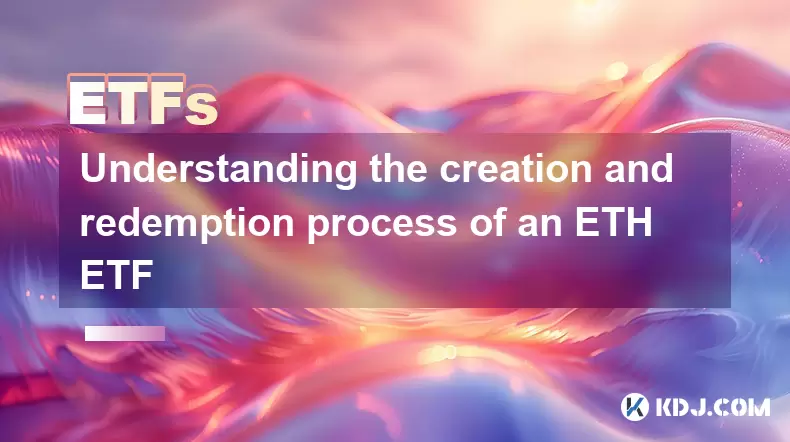
What is an ETH ETF?
An ETH ETF (Ethereum Exchange-Traded Fund) is a financial product designed to track the price of Ethereum without requiring investors to directly own or store the cryptocurrency. These funds are traded on traditional stock exchanges and provide exposure to Ethereum's price movements in a regulated, accessible format. Unlike direct crypto ownership, an ETH ETF allows investors to gain exposure through conventional brokerage accounts.
The creation and redemption process of an ETH ETF is central to its functioning. It ensures that the fund maintains liquidity and closely tracks the underlying asset—Ethereum. This mechanism involves authorized participants (APs), who act as intermediaries between the ETF issuer and the open market.
The Role of Authorized Participants in ETH ETF Creation
Authorized participants play a critical role in the lifecycle of an ETH ETF. These entities are typically large financial institutions with the infrastructure and permissions necessary to interact directly with the ETF issuer. When new shares of the ETH ETF need to be created, the AP initiates the process by depositing a specific amount of Ethereum into the fund’s custodial account.
- The AP must ensure that the deposited Ethereum is verified and stored securely
- The deposit triggers the issuance of a corresponding number of ETF shares, usually in blocks called "creation units"
- These newly minted shares are then introduced into the secondary market for public trading
This system helps maintain the balance between supply and demand in the ETF market while aligning its value with the actual Ethereum price.
How Redemption Works in an ETH ETF
Redemption is the reverse of the creation process. If there is reduced demand for the ETH ETF, authorized participants can redeem ETF shares for the underlying Ethereum. This mechanism prevents the ETF from trading at a significant discount or premium relative to the net asset value (NAV) of the Ethereum it holds.
- The AP submits a request to redeem a certain number of ETF shares
- The ETF issuer verifies the shares and removes them from circulation
- In return, the AP receives an equivalent amount of Ethereum based on the current NAV
This redemption process ensures that the ETF remains liquid and accurately priced, even during periods of high volatility in the Ethereum market.
The Custody and Security Mechanisms Behind ETH ETFs
A critical component of both creation and redemption is the secure custody of Ethereum. Since the ETH ETF relies on real Ethereum backing each share, the fund must employ robust storage solutions. Most ETF issuers partner with institutional-grade custodians who specialize in digital asset security.
- The custodian holds the Ethereum in cold storage wallets to minimize hacking risks
- Smart contracts may be used to automate verification during creation and redemption
- Regular audits are conducted to ensure transparency and confirm that Ethereum reserves match outstanding ETF shares
These measures build investor confidence and ensure regulatory compliance, especially in jurisdictions where ETF approval hinges on demonstrating strong asset protection protocols.
Price Tracking and Arbitrage in ETH ETFs
One of the key objectives of an ETH ETF is to mirror the price of Ethereum as closely as possible. However, due to market forces, the ETF may temporarily trade above or below its NAV. This discrepancy creates opportunities for arbitrage, which are exploited by authorized participants.
- If the ETF trades at a premium, APs create new shares by depositing Ethereum and sell them in the market to capture the price difference
- Conversely, if the ETF trades at a discount, APs buy shares at the lower price and redeem them for Ethereum, which they can then sell
- These actions help bring the ETF’s market price back in line with the underlying Ethereum value
This dynamic ensures that the ETH ETF remains efficient and reflective of real-time Ethereum prices, even under volatile conditions.
Frequently Asked Questions
Q: Who can participate in the creation and redemption of ETH ETF shares?
Only authorized participants—typically large financial institutions—are allowed to engage in the direct creation and redemption of ETH ETF shares. Retail investors can only buy and sell these shares on the open market through their brokers.
Q: How does the ETF issuer ensure that the correct amount of Ethereum backs each ETF share?
The issuer works with third-party auditors and custodians to perform regular checks on the Ethereum reserves. Blockchain analytics tools are often used to verify holdings and ensure that the issued ETF shares correspond to the amount of Ethereum held.
Q: Can an ETH ETF run out of Ethereum?
No, because the creation and redemption mechanism dynamically adjusts the supply of ETF shares based on Ethereum deposits and withdrawals. As long as there is Ethereum in the custodial account and authorized participants willing to facilitate transactions, the system remains functional.
Q: Is the Ethereum backing an ETH ETF subject to market risk?
Yes, the Ethereum held by the ETF is exposed to price fluctuations. However, the ETF structure ensures that any gains or losses in Ethereum’s value are proportionally reflected in the ETF shares. Investors should be aware that the value of their investment can go up or down based on Ethereum's performance.
Disclaimer:info@kdj.com
The information provided is not trading advice. kdj.com does not assume any responsibility for any investments made based on the information provided in this article. Cryptocurrencies are highly volatile and it is highly recommended that you invest with caution after thorough research!
If you believe that the content used on this website infringes your copyright, please contact us immediately (info@kdj.com) and we will delete it promptly.
- Altcoin Season Incoming? Coins Ready to Explode!
- 2025-07-19 18:30:12
- Dogecoin Price Prediction: Cup and Handle Pattern Points to Potential Breakout!
- 2025-07-19 18:50:11
- Hit the Jackpot? Brexit 50p Coin Could Be Worth £40,000!
- 2025-07-19 18:30:12
- Galactic Meme Coin Mania: Troller Cat Leads the Crypto Pack in 2025
- 2025-07-19 18:50:11
- Pi Coin, Bitcoin, and 2025: What the Future Holds, Ya Know?
- 2025-07-19 18:55:12
- TRX vs. RTX: Will Remittix Overtake Tron as the Altcoin to Watch in 2025?
- 2025-07-19 17:30:12
Related knowledge
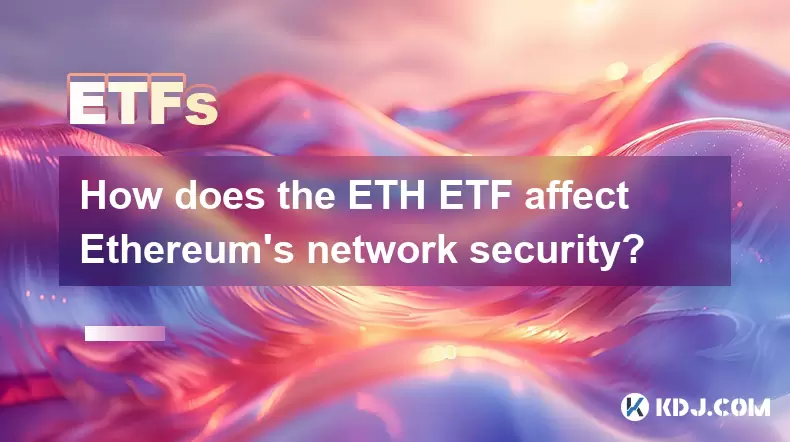
How does the ETH ETF affect Ethereum's network security?
Jul 17,2025 at 01:29pm
Understanding the ETH ETF ConceptAn Ethereum Exchange-Traded Fund (ETH ETF) is a financial product that allows investors to gain exposure to Ethereum ...
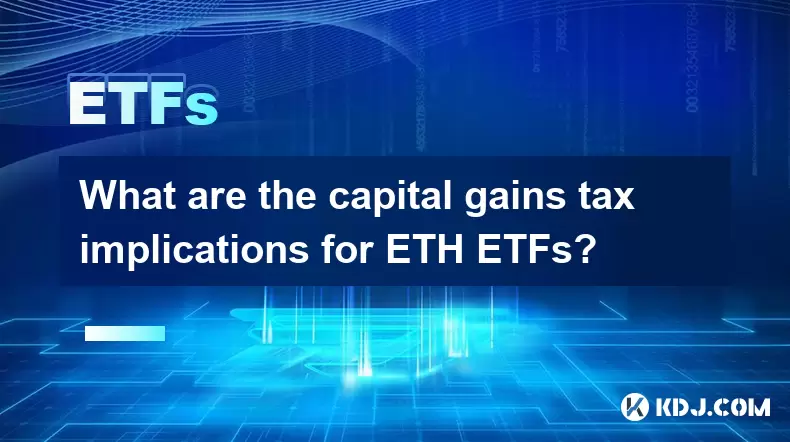
What are the capital gains tax implications for ETH ETFs?
Jul 18,2025 at 08:00am
Understanding Capital Gains Tax in Cryptocurrency InvestmentsCapital gains tax is a tax imposed on the profit realized from the sale of an asset that ...

Understanding the creation and redemption process of an ETH ETF
Jul 19,2025 at 07:36am
What is an ETH ETF?An ETH ETF (Ethereum Exchange-Traded Fund) is a financial product designed to track the price of Ethereum without requiring investo...

How to analyze which ETH ETF is the best choice
Jul 19,2025 at 05:01pm
Understanding ETH ETFs and Their RelevanceEthereum Exchange-Traded Funds (ETFs) have emerged as a popular investment vehicle for those seeking exposur...
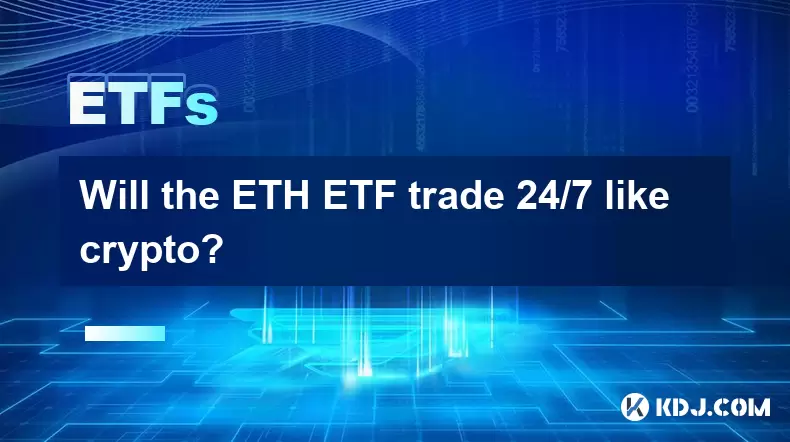
Will the ETH ETF trade 24/7 like crypto?
Jul 18,2025 at 10:00am
Understanding the ETH ETF and Its Trading HoursThe Ethereum Exchange-Traded Fund (ETH ETF) is a financial product that allows investors to gain exposu...
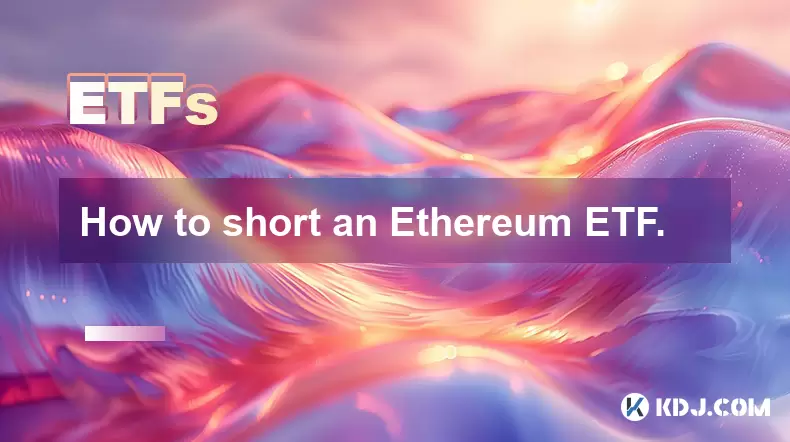
How to short an Ethereum ETF.
Jul 17,2025 at 05:43pm
Understanding the Concept of Shorting an Ethereum ETFShorting an Ethereum ETF involves betting against the price of Ethereum through a specific exchan...

How does the ETH ETF affect Ethereum's network security?
Jul 17,2025 at 01:29pm
Understanding the ETH ETF ConceptAn Ethereum Exchange-Traded Fund (ETH ETF) is a financial product that allows investors to gain exposure to Ethereum ...

What are the capital gains tax implications for ETH ETFs?
Jul 18,2025 at 08:00am
Understanding Capital Gains Tax in Cryptocurrency InvestmentsCapital gains tax is a tax imposed on the profit realized from the sale of an asset that ...

Understanding the creation and redemption process of an ETH ETF
Jul 19,2025 at 07:36am
What is an ETH ETF?An ETH ETF (Ethereum Exchange-Traded Fund) is a financial product designed to track the price of Ethereum without requiring investo...

How to analyze which ETH ETF is the best choice
Jul 19,2025 at 05:01pm
Understanding ETH ETFs and Their RelevanceEthereum Exchange-Traded Funds (ETFs) have emerged as a popular investment vehicle for those seeking exposur...

Will the ETH ETF trade 24/7 like crypto?
Jul 18,2025 at 10:00am
Understanding the ETH ETF and Its Trading HoursThe Ethereum Exchange-Traded Fund (ETH ETF) is a financial product that allows investors to gain exposu...

How to short an Ethereum ETF.
Jul 17,2025 at 05:43pm
Understanding the Concept of Shorting an Ethereum ETFShorting an Ethereum ETF involves betting against the price of Ethereum through a specific exchan...
See all articles

























































































